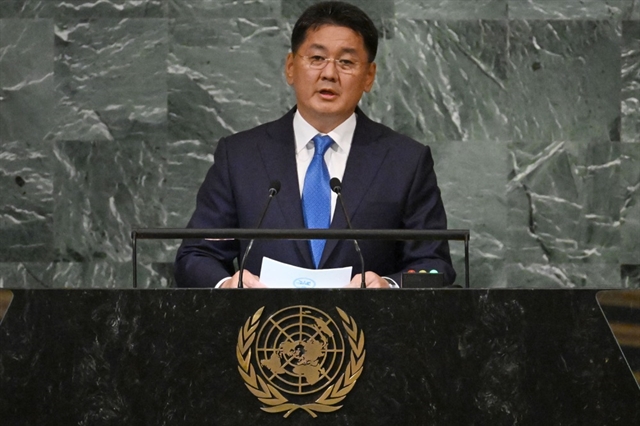Mongolian President’s Việt Nam visit a milestone in bilateral ties: ambassadorOctober 31,nạp cf 2023 - 11:14
HÀ NỘI — Vietnamese Ambassador to Mongolia Doãn Khánh Tâm has called the upcoming visit to Việt Nam by President of Mongolia Ukhnaagiin Khurelsukh a milestone in the bilateral ties. The visit comes ahead of the two countries celebrating the 70th anniversary of their diplomatic relations next year. In an interview granted to the Vietnam News Agency (VNA) ahead of the visit, from November 1-5, the diplomat recalled the first visit to Mongolia by late President Hồ Chí Minh in July 1955 after the establishment of the diplomatic ties on November 17, 1954, and the visit to Việt Nam by First Secretary of the Mongolian People's Revolutionary Party (MPRP) Central Committee and Chairman of the Council of Ministers Yumjaagiin Tsedenbal in September 1959, saying they set a foundation for the friendship between the two countries. The two countries had maintained the exchange of visits and contacts between high-ranking leaders, significantly contributing to consolidating and enhancing their mutual political trust and understanding, he said. At their recent meetings, Vietnamese and Mongolian leaders noted their wish to strengthen the bilateral relationship across spheres, for the sake of their peoples, and for peace, stability and development in the region and the world at large, the diplomat continued. Tâm held that the time-honoured relationship, mutual support, attention of the two countries’ leaders, rich natural resources and improved production capacity had created a firm foundation and momentum for the cooperation in all spheres, from economy and trade to science-technology, education, culture, sports and tourism. Localities of the two countries had also set up ties like Hà Nội - Ulaanbaatar, HCM City – Ulaanbaatar, Hoà Bình – Tuv, and Đắk Lắk – Orkhon, he added. Stressing the importance of Khurelsukh’s visit, Tâm said it would be the fourth state visit to Việt Nam by a Mongolian President since the one by then President Tsakhiagiin Elbegdorj in November 2013. High-level cooperation agreements to be signed during the trip would create an important legal basis to remove obstacles, and promote collaboration in the fields where both have strengths such as agriculture, mining and tourism, and contribute to balancing the two-way trade, the diplomat said. He suggested the two countries expand cooperation in mining (including rare earth), green growth, climate change response and air pollution reduction, saying Việt Nam should import animal products from Mongolia. Việt Nam signed about 20 free trade agreements (FTAs), he said, noting that through Việt Nam, Mongolian businesses could access the Association of Southeast Asian Nations (ASEAN) and other markets. Trade between the two countries doubled to US$85 million in 2022 from only $41.4 million in 2017, and the value stood at about $75 million in the first eight months of this year. The two countries boast substantial potential and advantages to promote cooperation in agriculture, tourism, education - training, science, information technology, digital transformation, digital economy, and energy, according to the ambassador. He expressed his firm belief that the relationship would grow further in the time ahead. In discussions with Vietnamese leaders, Mongolia leaders always stressed the rising stature of Việt Nam and affirmed the priority it attached to relations with Việt Nam as a leading partner in Southeast Asia, considering Việt Nam the important gateway to access the 700 million-people market of ASEAN, the ambassador noted. It was part of Mongolia's foreign policy to promote relations not just with the two major powers that it shares natural land borders with - China and Russia, but also with other partners via 'third neighbour' policy, Tâm added. — VNS |

